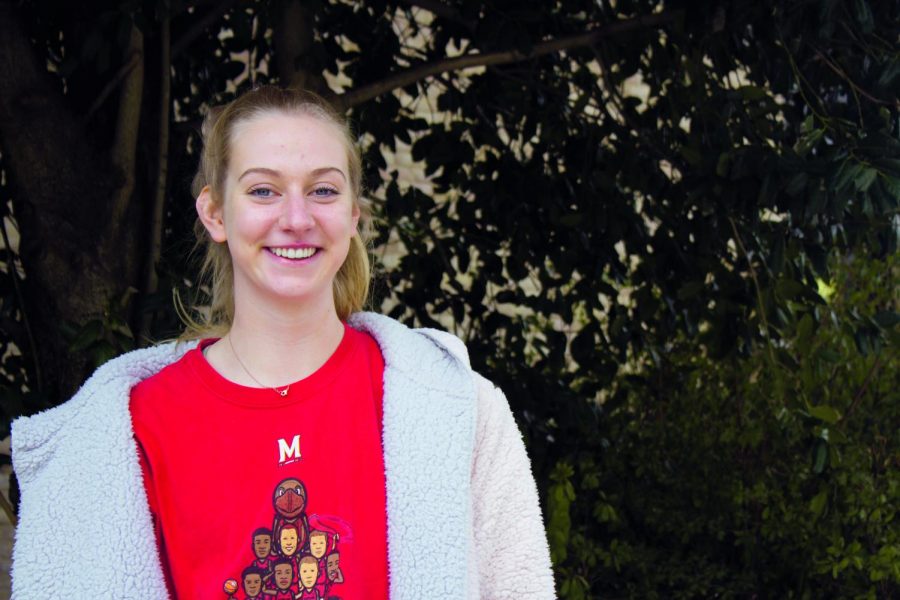Teams, adviser plan meetings
Sarah Healy, a first-year Women’s Basketball and Lacrosse player and transfer studies student, is part of the Student-Athlete Advisory Council.
April 30, 2019
A new Student-Athlete Advisory Council helped clean up the Earl S. Scott nature trail in April as its first community service project since the group started in February.
The council’s members are seven athletes from Baseball, Softball, Men’s and Women’s Basketball and Men’s and Women’s Lacrosse.
Student Athlete Success Program Coordinator Trey Anderson said the council will expand next semester to fall Riverhawks teams.
Council members, who have grade-point averages of 3.0 or higher and were identified as leaders by their coaches, have met with Anderson twice to discuss their roles and the council’s agenda.
Anderson said the council’s purpose is to “allow administrators to have individuals from their teams be the voice of athletes.”
“We don’t always know what the teams want or need,” Anderson said, “including leadership-skill development, opportunities for community service or gear updates.”
First-year transfer studies student Sarah Healy, who plays center for Women’s Basketball and goalie for Women’s Lacrosse, said her coaches selected her to represent both teams on the council this year.
“I feel lucky to be a SAAC representative,” Healy said. “I like helping people and I like sports a lot.”
She said she hopes the council will “help raise enough money to get nicer basketballs. [My teammates] will love that. In lacrosse we have everything we need for right now.”
Caden Cote, a first-year business administration student and offensive midfielder for Men’s Lacrosse, represents his team on the council this year.
“I was put in a position to lead and I am grateful for it,” Cote said. “Hanging out with all of these guys on and off the field, I can hear about the improvements they want and translate that to Mr. Anderson.”
He said he “want[s] to help everyone get what they want for the team,” Cote explained. “From the coaches, administrators and our school, I want to give them all the feedback they need.”
Anderson compared the council to the Student Government Association, saying both groups develop leaders and are a voice for students.
“They will be just like any other student organization,” Anderson said. “They have to come up with service projects they want to do, debate about the respective merits of each project and then decide which teams will be involved. They will do the step-by-step planning on their own.”
Cote said he likes the council’s community service.
“We’re going to do a lot of community involvement to improve the campus environment,” he said.
Healy said Anderson suggested the student athletes on the council should clean up their social media pages.
“They told us, ‘You guys are the face of [the council] so you need to clean up your Instagram and Twitter because you represent the college and you’re leaders representing our teams,’” Healy said. “They told us that if we have a profile to make sure to include our pics, stats and real names in our bios so colleges can contact us.”
Anderson said it is important for athletes to demonstrate academic as well as athletic leadership by keeping their grades up.
“I work hard not only on the field but in the classroom as well,” Cote said.
Other athletes agreed.
“Right now I have a 4.0,” Healy said. “My goal is to maintain it, but it has been difficult … between sports and studying. But time management is key.”












